Calf Strengthening: The Importance of Working the Full Kinetic Chain
If you’ve been trying to increase your calf strength after an injury you might know that doing your calf raises and doing your hops are an important part of the rehab journey. But did you also know that it is important to work the full Kinetic Chain?
Very rarely in sports do we use our calves in isolation. They are often working in conjunction with many other muscle groups. So we need to consider the entire lower limb when rehabbing a calf injury. By adding an element of plantarflexion to your hinge, squat or lunge movements you can work the hip, knee and ankle joints in a way they may be required for your sport.
These movements can then be progressed by adding any plyometric component. Try using this to complement your traditional strength training and make you a more athletic individual.
What is the Kinetic Chain?
The kinetic chain refers to the interconnected system of joints, muscles, and connective tissues in the human body that work together to produce movement.
It is often described as a series of links or segments that transmit forces and energy from one part of the body to another during various activities, such as walking, running, or lifting.
The kinetic chain operates on the principle that movement in one part of the body affects and influences movement in other parts.
This concept recognises that the body functions as a whole unit, with each joint and muscle group playing a role in the overall movement pattern.
Understanding plyometric exercises
Plyometric exercises, also known as “jump training,” are a form of high-intensity, explosive movements that aim to develop power, speed, and agility.
These exercises involve rapid stretching and contracting of muscles, utilising the stretch reflex to generate maximum force output.
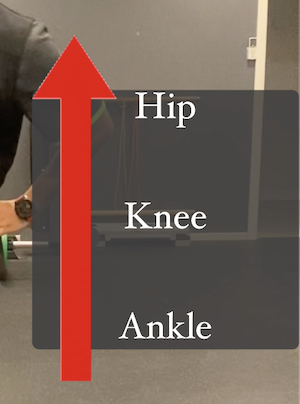
The kinetic chain operates on the principle that movement in one part of the body affects and influences movement in other parts.
Simple Calf Strengthening Exercises
Calf raises are an effective exercise for strengthening the calf muscles, primarily the gastrocnemius and soleus muscles.
Weak calf muscles can contribute to common lower leg injuries such as Achilles tendonitis or calf strains.
Calf raises are often included in rehabilitation programs for individuals recovering from calf muscle injuries or surgeries. They help rebuild strength, restore range of motion, and improve muscle function in the calves.
Standing Single Leg Calf Raise
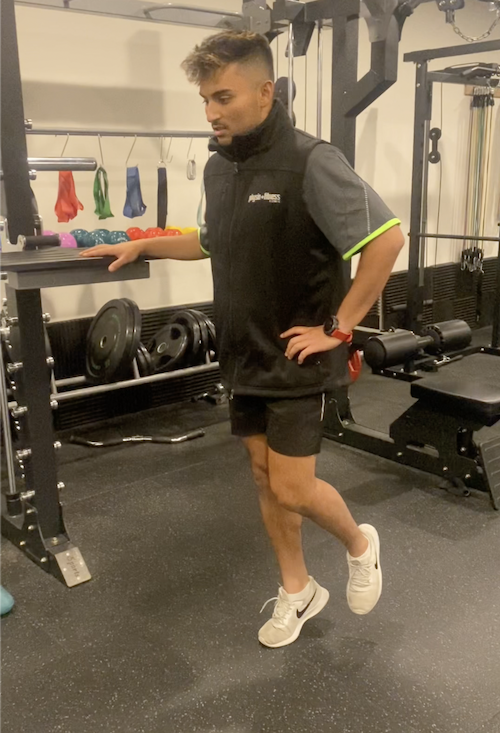
- Stand upright with your feet hip-width apart.
- Shift your weight onto one leg while keeping a slight bend in the knee.
- Engage your core for stability and maintain good posture throughout the exercise.
- Position the other leg slightly behind you or lift it off the ground, depending on your balance and strength.
- Place the ball of your foot on an elevated surface such as a step or a sturdy block, with your heel hanging off the edge.
- Slowly lower your heel toward the ground, feeling a stretch in your calf muscle.
- Push through the ball of your foot and raise your heel as high as you can, lifting your body up onto your toes.
- Pause briefly at the top of the movement and squeeze your calf muscles.
- Lower your heel back down in a controlled manner to complete one repetition.
- Repeat the exercise for the desired number of repetitions on one leg before switching to the other leg.
Eccentric Heel Drop with Barbell and Block Step
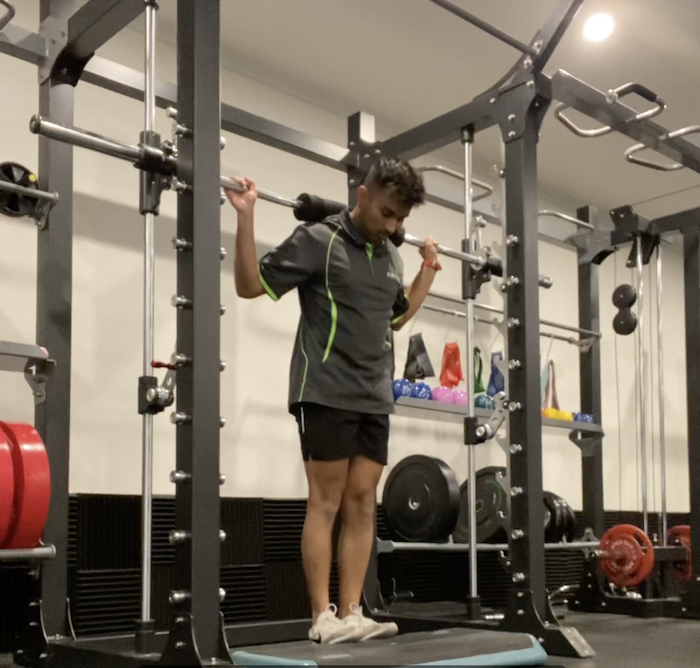
- Begin by setting up the equipment: Place a block step on the ground, ensuring it is stable and secure. Position a barbell on your shoulders, across your upper back, gripping it with both hands at a comfortable width.
- Stand tall with your feet shoulder-width apart, toes pointing forward, and your core engaged for stability.
- Position the balls of your feet on the edge of the block step, with your heels hanging off the edge.
- Ensure that your weight is evenly distributed across both feet.
- Slowly lower your heels towards the ground, feeling a stretch in your calf muscles.
- Push through the balls of your feet and raise your heels as high as you can, lifting your body onto your toes.
- Maintain control throughout the movement and avoid any jerking or bouncing motions.
- Pause briefly at the top of the movement, squeezing your calf muscles to maximise contraction.
- Lower your heels back down to the starting position in a controlled manner to complete one repetition.
- Repeat the exercise for the desired number of repetitions.
Hop for Calf Strengthening
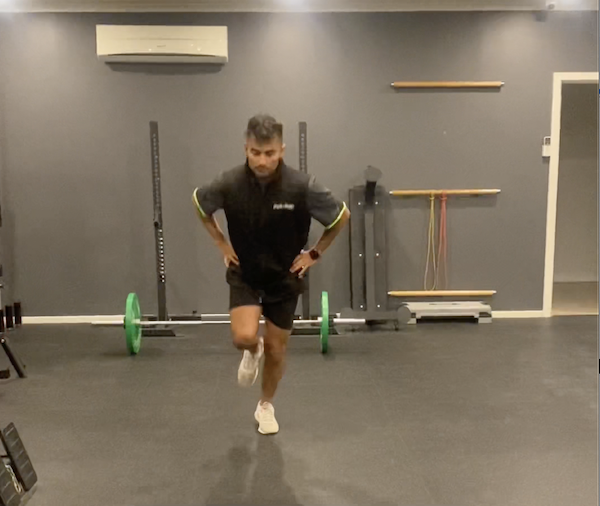
- Begin by standing tall with your feet hip-width apart and your core engaged for stability.
- Shift your weight onto the balls of your feet, with your heels slightly elevated off the ground.
- Bend your knees slightly to prepare for the hop.
- Using the power of your calf muscles, push off the balls of your feet and propel yourself upwards into the air.
- While in the air, extend your ankles and point your toes to maximise the engagement of your calf muscles.
- Maintain control throughout the movement and try to land softly on the balls of your feet, absorbing the impact with your calf muscles.
- As soon as you land, immediately transition into another hop by pushing off again with your calf muscles.
Why is it important to work the full Kinetic Chain when recovering from a calf injury?
Very rarely in sports do we use our calves in isolation. They are often working in conjunction with many other muscle groups. We need to then include the entire lower limb when rehabilitating a calf injury.
By adding an element of plantarflexion to your hinge, squat or lunge movements you can work the hip, knee and ankle joints in a way they may be required for your sport.
Calf Strengthening Exercises to Assist with Getting Back into Your Sports
WALL ASSISTED Hinge
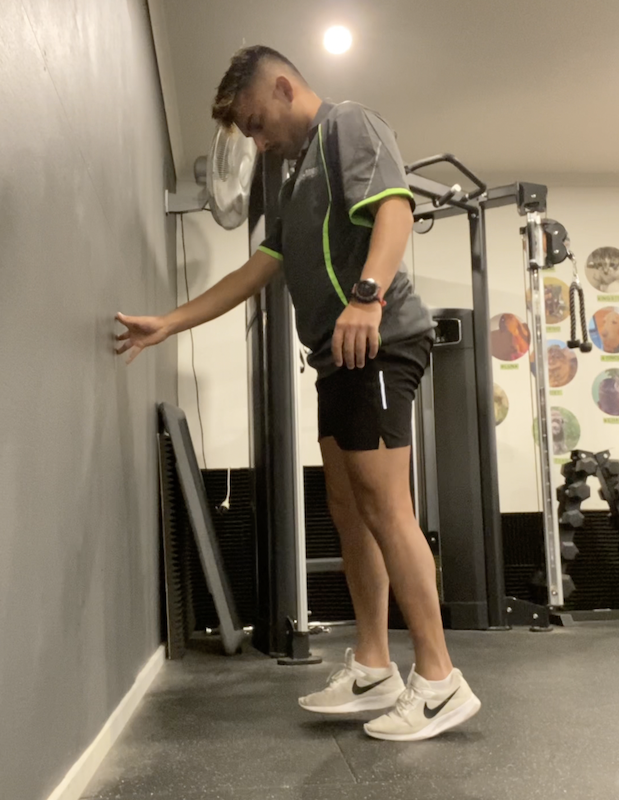

- Stand facing a wall with your feet hip-width apart.
- Have one foot slightly off the ground.
- Slowly lean forward from your hips, keeping your back straight and bending at the waist. Your extended leg should remain straight and in line with your body.
- Continue to lean forward until you feel a gentle stretch in the calf and hamstring of your extended leg. Be mindful not to push beyond a comfortable range of motion.
- Slowly return to an upright position, maintaining control and stability.
- Repeat the stretch on the opposite leg by extending the other leg out in front of you and placing its foot against the wall.
Box Step Lunge
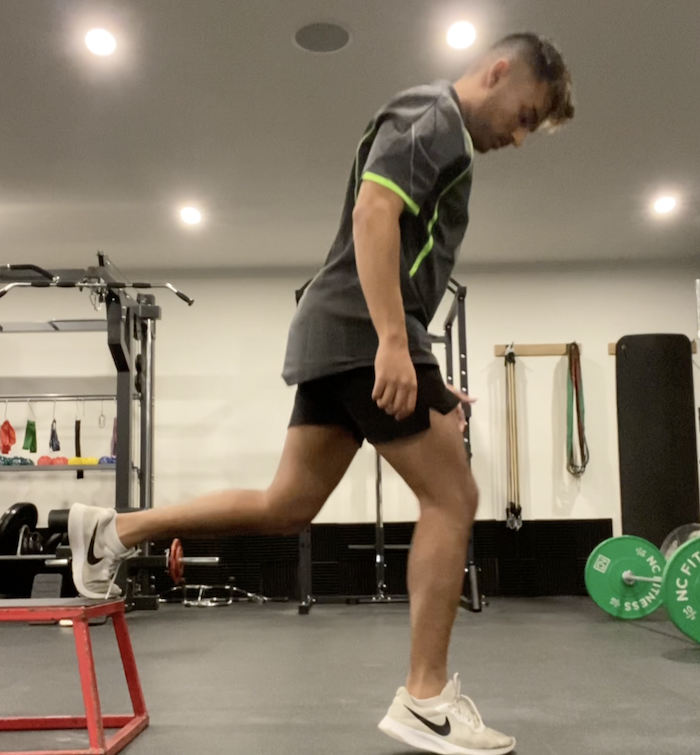
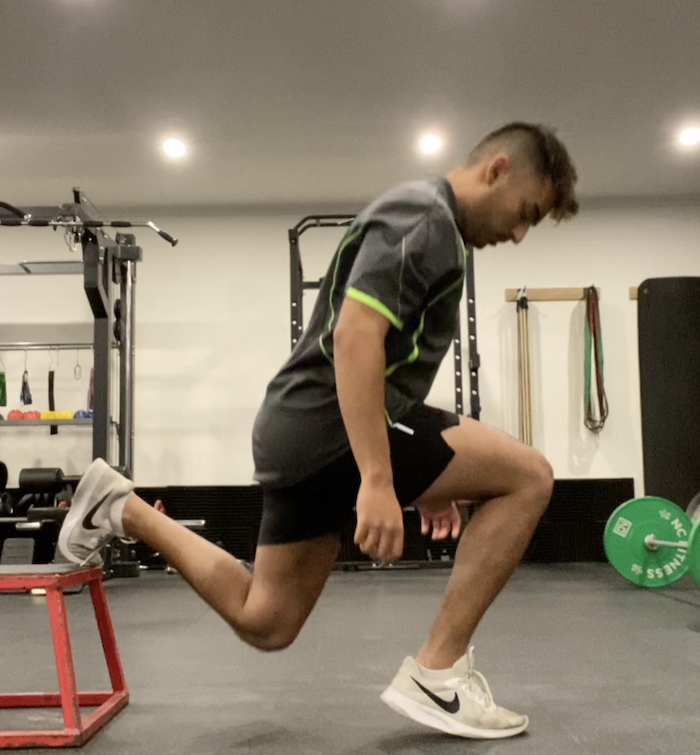
- Begin by standing in front of a sturdy box or platform with your feet hip-width apart.
- Step back with your right foot and place the ball of your right foot securely on top of the box or platform, while keeping your left foot firmly planted on the floor.
- Ensure that your right foot is positioned far enough back on the box so that when you lunge, your front knee remains aligned with your ankle and does not go past your toes.
- Lower your body by bending both knees, bringing your left knee down towards the floor as you maintain an upright posture.
- Keep your core engaged and maintain stability throughout the movement.
- Push through your left heel to return to the starting position, driving upwards and engaging your leg muscles.
- Repeat the lunge movement, stepping back with your left foot this time and placing it on top of the box.
Lateral Lunge / Cossack
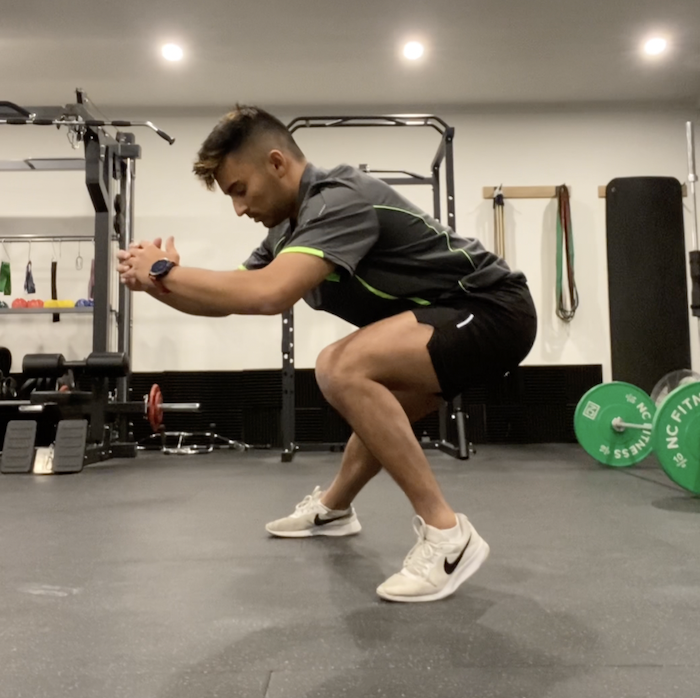
- Begin by standing tall with your feet wider than shoulder-width apart, toes pointing forward, and your core engaged for stability.
- Shift your weight to one side by taking a wide step to the right or left, ensuring that your toes remain pointed forward.
- Keep your extended leg straight while bending the knee of the lunging leg, pushing your hips back and keeping your chest lifted.
- Lower your body towards the lunging side, aiming to bring your thigh parallel to the ground. Maintain an upright posture throughout the movement.
- Push through the heel of the lunging leg to return to the starting position, engaging your leg muscles and driving upwards.
- Repeat the lunge movement on the opposite side by taking a wide step in the opposite direction.
Lunge into Jump
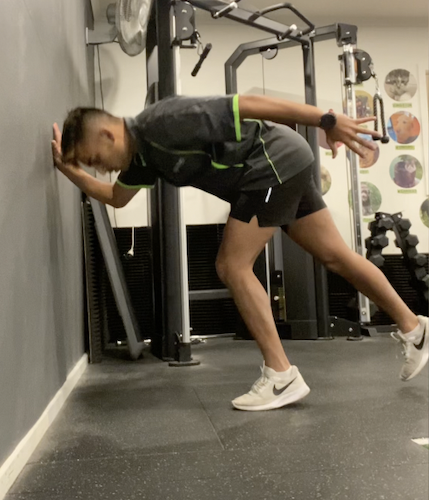
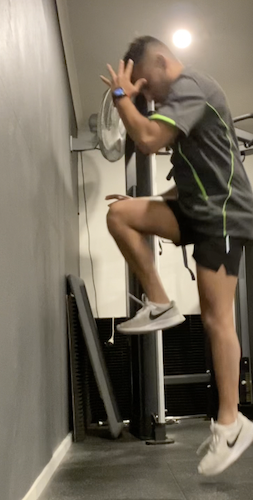
- Begin by standing tall with your feet hip-width apart and your core engaged for stability.
- Take a step forward with your right foot, bending both knees to lower your body into a lunge position. Ensure that your front knee is aligned with your ankle and does not go past your toes.
- Push through your front heel and explosively jump upwards, propelling yourself off the ground.
- While in the air, switch the position of your legs by extending your right leg back and bringing your left leg forward.
- Land softly on the ground by bending both knees to absorb the impact, transitioning immediately into another lunge position.
- Repeat the movement, alternating legs.
Box Step Lunge Jump
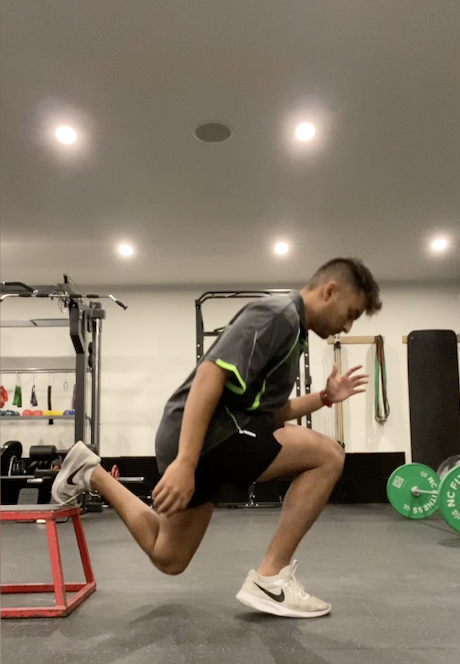
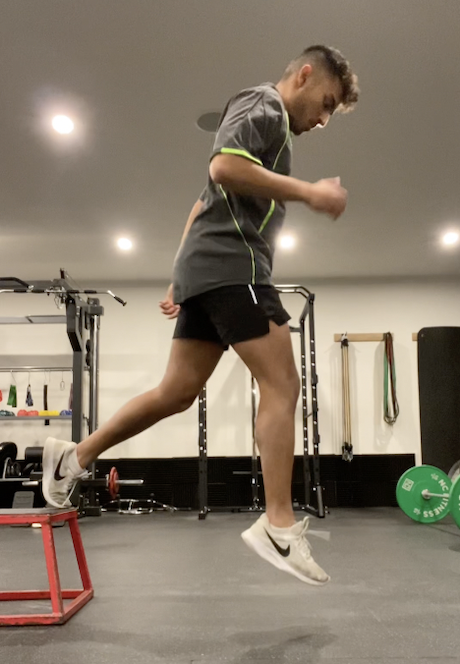
- Begin by standing in front of a sturdy box or platform with your feet hip-width apart facing away from the box.
- Step one foot back and place the ball of your foot on top of the box or platform, while keeping your other foot firmly planted on the ground.
- Lower your body by bending both knees, bringing your back knee down towards the ground as you maintain an upright posture.
- Push through your front heel to drive upwards, propelling yourself off the ground into a jump.
- While in the air, switch the position of your legs by extending your back leg forward and bringing your front leg back.
Lateral Weight Shift Hop
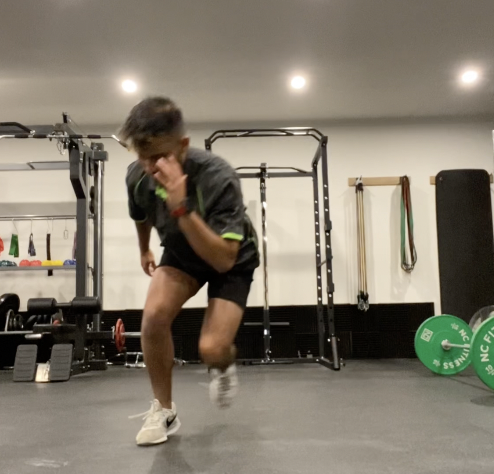
- Begin by standing feet hip-width apart and your core engaged for stability.
- Shift your weight onto your right foot, slightly bending the knee while keeping your left foot off the ground.
- Using the power of your right leg, push off forcefully and hop laterally to the left, shifting your weight onto your left foot.
- Land softly on your left foot, absorbing the impact with a slight bend in the knee.
- Immediately transfer your weight back to your right foot by pushing off with your left foot and hopping laterally back to the right.
- Continue alternating hops from side to side, maintaining a rhythmic motion.
- Focus on maintaining balance and control throughout the exercise, using your leg muscles to generate power for each hop.
Remember, it’s important to listen to your body and avoid any excessive pain or discomfort. If you experience sharp or prolonged pain, consult with a healthcare professional before continuing.
By incorporating non-traditional exercises alongside traditional strength training, you can enhance your overall athleticism, improve functional movement, and reduce the risk of injuries, ultimately helping you achieve your fitness goals.
